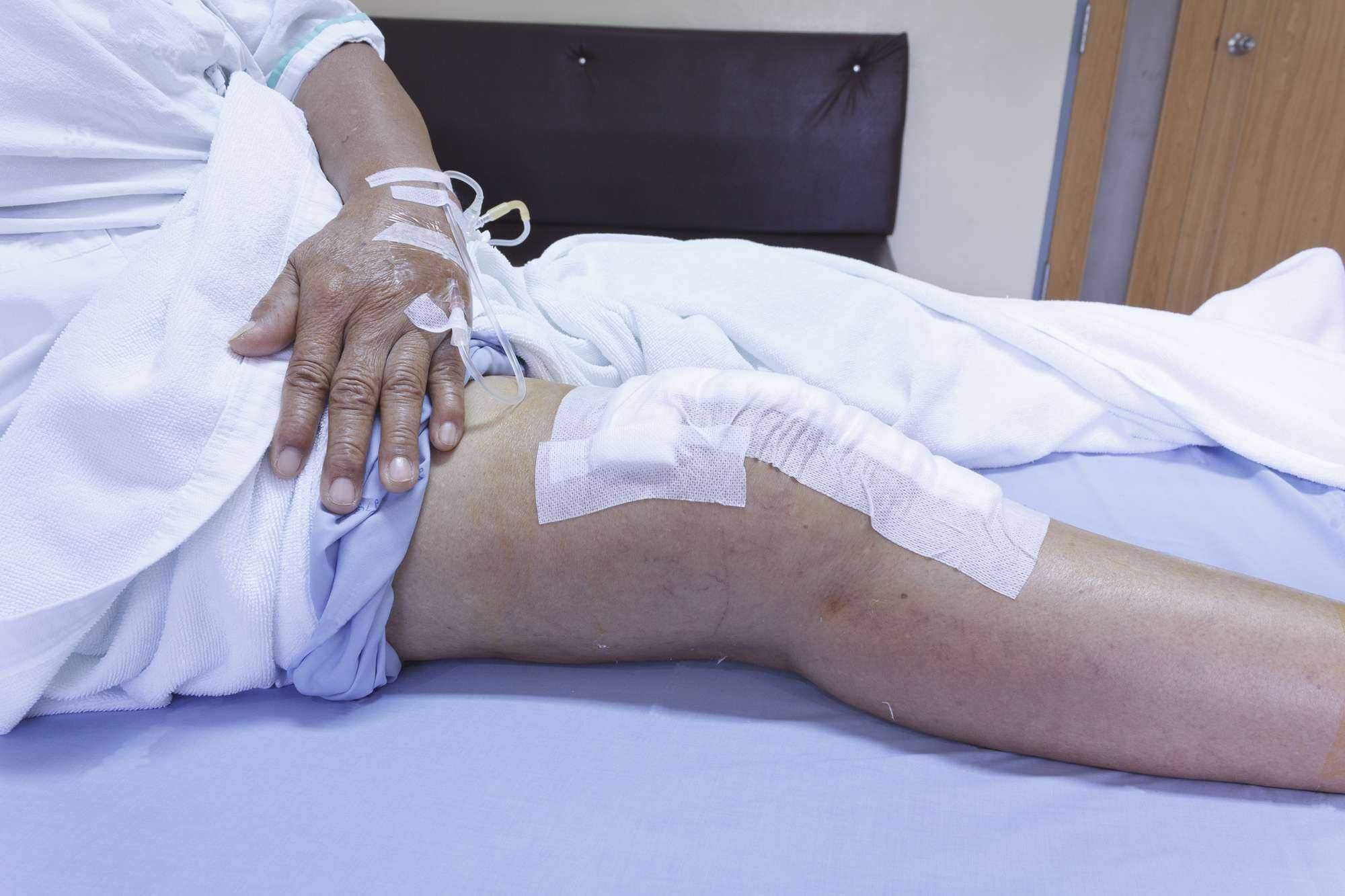BY W. GIFFORD- JONES MD & DIANA GIFFORD-JONES
Ask a comedian, tennis player, or chef, what’s important in their work. They will tell you, it’s timing. Every year 1,200,000 knees are replaced in North America, and just as comedians need good timing, so too this elective surgery. If COVID-19 concerns have you delaying treatment, you may want to think again.
Researchers at the Feinberg School of Medicine of Northwestern University, report in the Journal of Bone and Joint Surgery that many people are getting it wrong. Their eight-year study involved 8,002 patients aged 45 to 79 who were at risk of osteoarthritis.
Assessing patients for knee replacement involves: consideration of age, severity of symptoms, and what x-rays show of knee damage. Researchers found that 90% of people with knee osteoarthritis are delaying too long and missing out on the benefits of replacement.
They also found that 26% of patients had surgery too early, adding risk of revision and a second, more difficult surgery later in life.
African Americans were three times more likely to delay knee surgery than white Americans, even when they met the criteria. Overweight people were also more likely to say no to the procedure. Younger people and those living alone often advanced knee replacement.
So, what is right timing? It depends on several factors and circumstances.
No one likes the prospect of surgery. There’s a basic human desire to put it off, but this decision has consequences. For instance, if a sore knee is keeping you from: exercising, walking, or cycling, the cardiovascular system suffers. Delay may set the stage for coronary attack. A more sedentary lifestyle can lead to weight gain and risks for Type 2 diabetes.
Good mobility suggests that strong muscles are supporting the knee. But a lack of exercise causes muscle atrophy lengthens recovery time from surgery. Some patients in their desire to postpone surgery elect to have corticosteroid injections. This has been standard treatment to ease pain, but injections come with risks. A study at Boston University showed that frequent injections could: increase the risk of cartilage damage, joint and bone destruction, and non-traumatic stress fractures. If used, they should be limited to two or three injections a year.
What about rushing into surgery too early? Age is always an important consideration as knee replacements do not last forever. The average artificial joint lasts about twenty years. As the equipment ages, the bond between the implanted joint and the bone may loosen or fail, causing: pain, instability, swelling or stiffness.
If discomfort is not significant, it’s prudent to delay surgery. Waiting until you are 65 or older lessens the risk of facing a second operation in the future.
But other less evident factors make the best timing difficult to judge. For example, how significantly is osteoarthritis affecting one’s quality of life? If knee pain is severe and x-rays show extensive damage, it’s time to proceed with surgery.
Before surgery, losing excess weight will decrease the risk of complications. After the operation, walking, golf, and cycling are good activities. But sports such as running, tennis and weightlifting, cause too much stress on the joint and can weaken it.
For the elderly, and others with elevated risk for COVID-19, an important consideration is post-operative recovery in hospital and rehabilitation units. A discussion with your doctor, your family, and a support team should focus on a plan to mitigate risk.
Stay in the loop with exclusive news, stories, and insights—delivered straight to your inbox. No fluff, just real content that matters. Sign up today!
Parkinson’s disease and chiropractic care
Dr. W. Gifford-Jones, MD is a graduate of the University of Toronto and the Harvard Medical School. He trained in general surgery at Strong Memorial Hospital, University of Rochester, Montreal General Hospital, McGill University and in Gynecology at Harvard. His storied medical career began as a general practitioner, ship’s surgeon, and hotel doctor. For more than 40 years, he specialized in gynecology, devoting his practice to the formative issues of women’s health. In 1975, he launched his weekly medical column that has been published by national and local Canadian and U.S. newspapers. Today, the readership remains over seven million. His advice contains a solid dose of common sense and he never sits on the fence with controversial issues. He is the author of nine books including, “The Healthy Barmaid”, his autobiography “You’re Going To Do What?”, “What I Learned as a Medical Journalist”, and “90+ How I Got There!” Many years ago, he was successful in a fight to legalize heroin to help ease the pain of terminal cancer patients. His foundation at that time donated $500,000 to establish the Gifford-Jones Professorship in Pain Control and Palliative Care at the University of Toronto Medical School. At 93 years of age he rappelled from the top of Toronto’s City Hall (30 stories) to raise funds for children with a life-threatening disease through the Make-a-Wish Foundation. Diana Gifford-Jones, the daughter of W. Gifford-Jones, MD, Diana has extensive global experience in health and healthcare policy. Diana is Special Advisor with The Aga Khan University, which operates 2 quaternary care hospitals and numerous secondary hospitals, medical centres, pharmacies, and laboratories in South Asia and Africa. She worked for ten years in the Human Development sectors at the World Bank, including health policy and economics, nutrition, and population health. For over a decade at The Conference Board of Canada, she managed four health-related executive networks, including the Roundtable on Socio-Economic Determinants of Health, the Centre for Chronic Disease Prevention and Management, the Canadian Centre for Environmental Health, and the Centre for Health System Design and Management. Her master’s degree in public policy at Harvard University’s Kennedy School of Government included coursework at Harvard Medical School. She is also a graduate of Wellesley College. She has extensive experience with Canadian universities, including at Carleton University, where she was the Executive Director of the Global Academy. She lived and worked in Japan for four years and speaks Japanese fluently. Diana has the designation as a certified Chartered Director from The Directors College, a joint venture of The Conference Board of Canada and McMaster University. She has recently published a book on the natural health philosophy of W. Gifford-Jones, called No Nonsense Health – Naturally!












